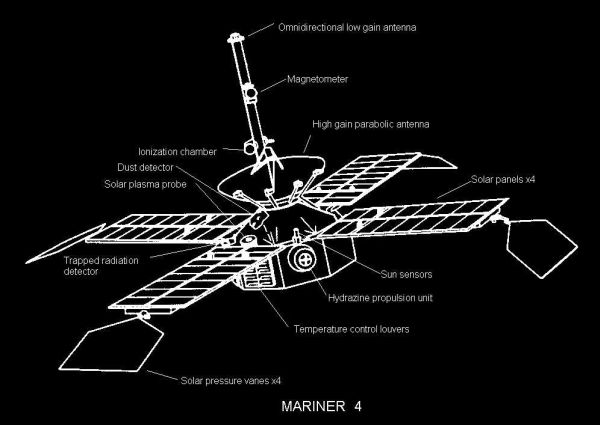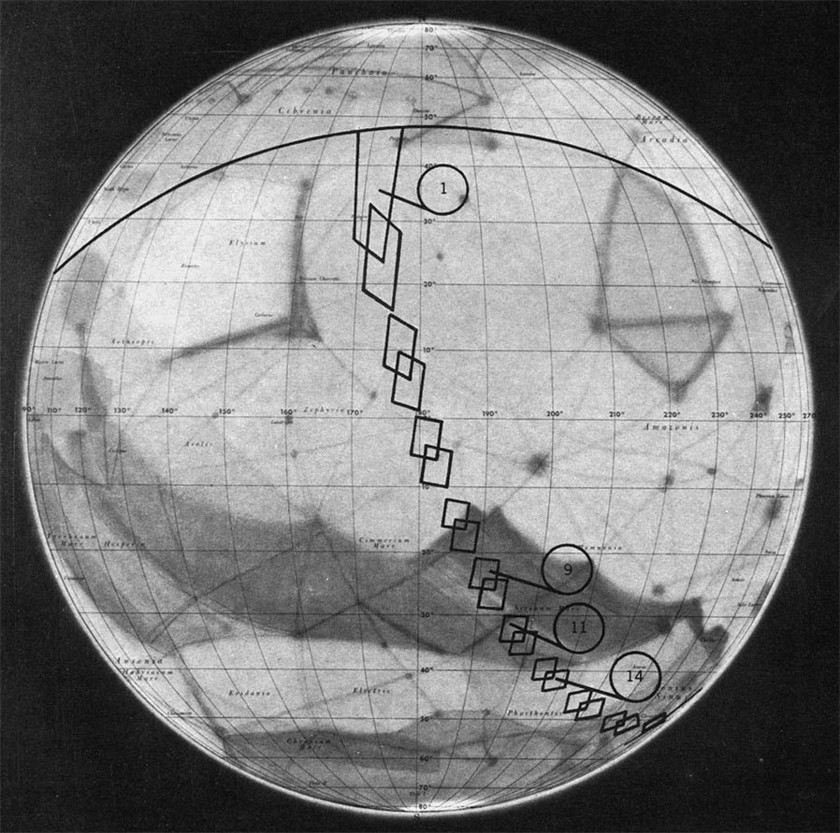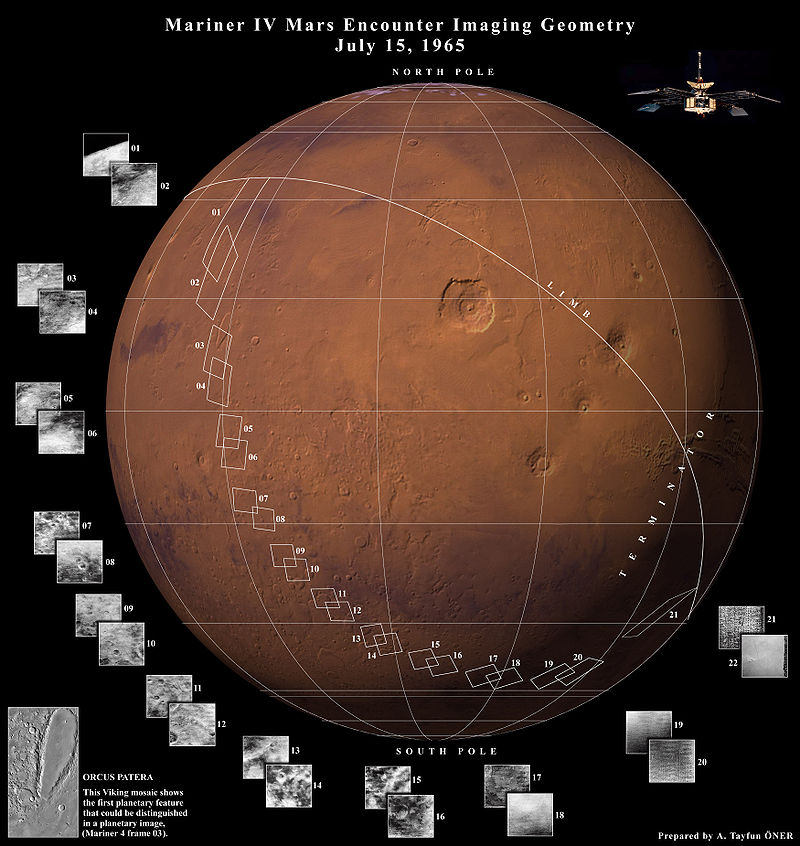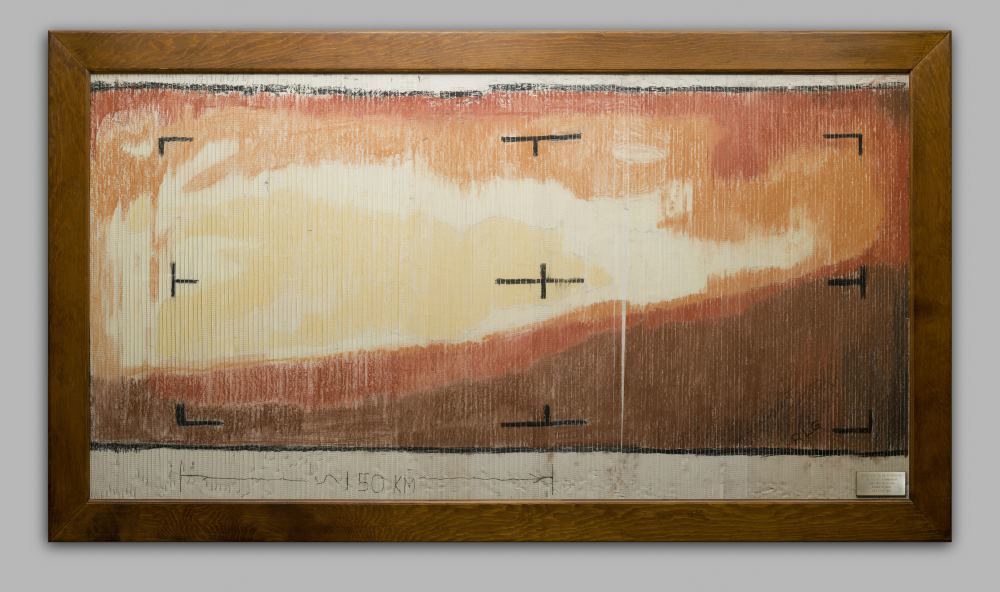
Mars, like Venus , aroused the keen curiosity of people - from ancient times to the present day. It's simple - it stands out in the sky, so you can't miss it. And when it became known that this was a planet, people immediately began to observe by all available methods. Well, since these methods left much to be desired, the results of the observations were not entirely correct. Or rather, completely incorrect.
It all started with the "canals" that the Italian astronomer Schiaparelli noticed. He mapped what he seemed to see with his own eyes. The American astronomer Lovell not only saw the canals, but also decided that this population of Mars received water like that. In his opinion, the canals were an irrigation network originating from the polar caps of the planet and encircling all of Mars. They immediately decided that Mars is an arid planet, the ancient population of which is saved from the onset of the desert with the help of titanic structures. The debate about the canals and the Martians continued until the middle of the 20th century, when they were not able to end with the help of serious scientific equipment. This equipment in the form of interplanetary stations was sent to the Red Planet. The first successful mission is Mariner 4.
Not only interplanetary stations
Despite the above, one should not think that all scientists of the late 19th - early 20th centuries believed that there are irrigation canals on Mars, and, accordingly, the civilization that dug them out. Many experts doubted. In order to check the assumption about the channels, the surface of Mars was sketched by various scientists at different times, and then, with the advent of appropriate technologies, it was photographed.
It turned out, despite the existence of a large number of different drawn maps, none of them is similar to the other, as it should be if real-life objects are drawn.
In 1907, a scientist named Alfred Russell Wallace wrote and published a book "Is Mars Inhabited?" He suggested that there is no life on Mars - neither intelligent nor elementary.
A little later, however, high-quality (at the beginning of the 20th century) photographs showed the presence of relief areas where there was something similar to canals. But, firstly, there were much fewer of them than the observers drew earlier, and secondly, they did not look like a global irrigation network. But the debate about Mars and the Martians continued - until mankind reached the stage of scientific and technological progress when it became possible to develop, assemble and send interplanetary stations into space.
The era of interplanetary stations Mariner
Before the advent of the stations, mankind has implemented not so many space projects. Almost all of them set themselves the goal of entering the Earth's orbit. Flight to another planet? Even now, this is an extremely complex and very expensive project, but then it was an attempt to translate science fiction into reality.
Both the USSR and the USA, the main players in the space industry of that time, achieved major successes in science and technology, as well as in military affairs by the middle of the last century (hello to von Braun). The United States had new Atlas missiles (naturally, it was a weapon - intercontinental ballistic missiles), which, in combination with the second stage of Agena, could launch a payload into space. And it was the Atlas-Agena combination that made it possible to send the first Mariner stations to Mars.

Unfortunately, there were problems with the first three stations - different each time. They were all lost. And only the fourth not only reached the goal of her journey, but also successfully completed the task - the direct study of Mars, including photographing at close range. The mission of Mariner 4 was flyby - that is, without a goal to land on the surface of the Red Planet. Then it was impossible or extremely difficult to implement technically.
All Mariner space stations were similar to each other. They received energy from solar panels - extremely expensive at the time. Probes that were sent to Mars were equipped with four panels to get more sunlight. 7056 photocells were contained on the surface of each panel.

The panels were folded with special springs in the capsule. When reaching a given point, the squibs were triggered, removing the locking pin, the station went to a given trajectory, the panels opened.
Mariner 4 success
July 14, 1965 when the Mariner 4 space station made it to its target, albeit not without problems. All along the way, the navigation system malfunctioned. The station was guided by two objects - the Sun and the Canopus star. But something went wrong and space debris accompanied the station on the way. The particles reflected the light of the Sun and the station perceived them as a new object of tuning. Scientists had to reprogram the station's on-board computer several times so that it would not go astray and fly away instead of Mars to unknown distances.

Whatever it was, but everything turned out well. The station passed Mars. The maximum approach is 9846 km. The device took 21 complete images, and initially, scientists were not sure that the equipment for shooting would work properly after a long space journey. In general, the camera took 22 photos, but one of them turned out to be incomplete.
The device not only photographed Mars, but also transmitted them to Earth - only 643 kilobytes of data (the total amount of data transferred is about 6 MB). The photographs were not transmitted to the Earth immediately, the sending of data started after the end of the flyby of Mars, when the signal was restored. Photos were transmitted from a huge distance of 216 million km. One snapshot was transmitted for 8.66 hours at a rate of 8.33 bits per second.
By the way, the scientists did not want to wait for the code of the first picture received from space to be converted into an image using a decoder. This took several hours, so it was decided to decode the image by hand and then color it in with colored pencils.

The first "photograph" was a hand-painted sketch

Goodbye Aelita
The device did not record any channels or their creators. It so happened that the system flew over the oldest parts of the surface, photographing only the craters. Of course, there are no man-made channels on the Red Planet and in other regions, but still there are more interesting objects in other parts of Mars.
The surface that Mariner 4 photographed was very similar to the well-studied surface of the Moon.
The scientific instruments carried by the station showed that Mars is an extremely cold, dry and unfavorable planet for life. In addition to climatic conditions, there is another negative factor - cosmic radiation, from which Mars has no protection. The ionosphere is absent.

Be that as it may, the Marine-4 space station has fulfilled its task, for which honor and praise be given to its creators. Communication with the fourth station was maintained until December 21, 1967, and in August, scientists simultaneously maintained communication with Mariner 4 and Mariner 5.
On December 7, the "fuel" for the orientation system ran out, it was compressed nitrogen. A few days later, several dozen micrometeorites hit Mariner 4, which changed its orientation. Communication gradually weakened until it completely disappeared. Now the device is in the solar system and moves in a heliocentric orbit.
